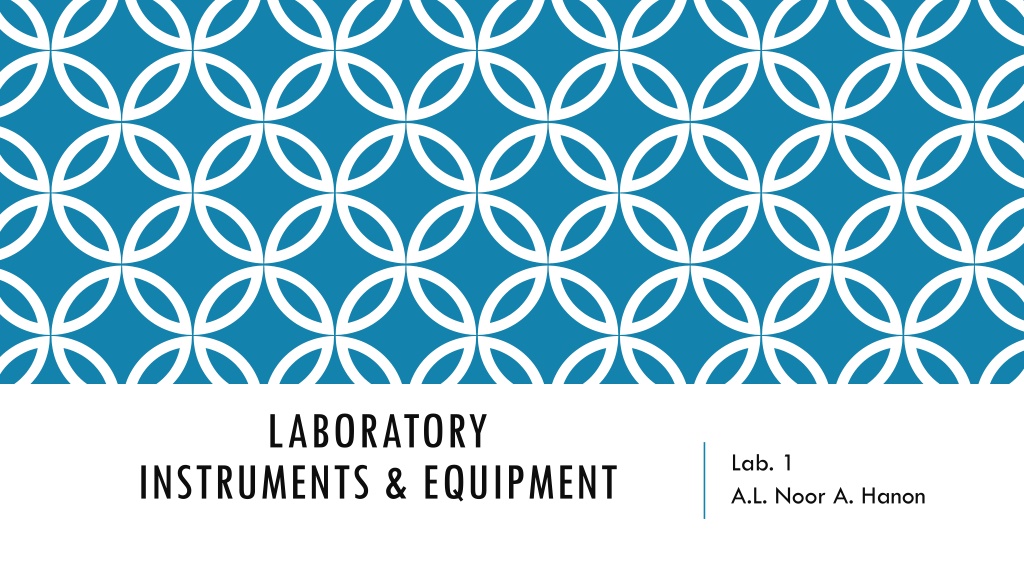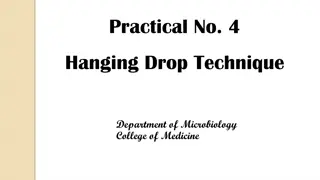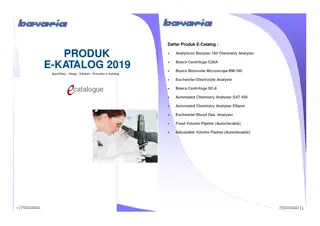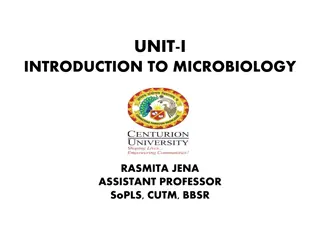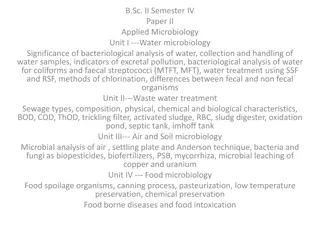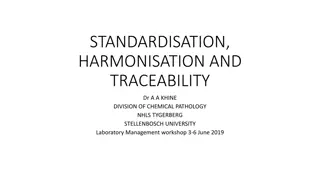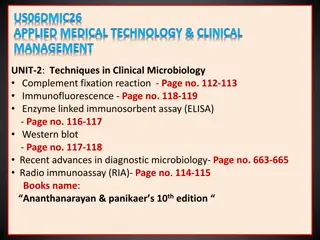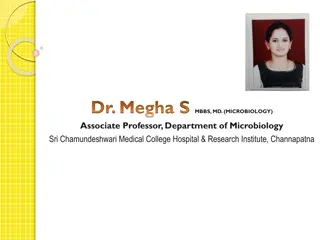Microbiology Laboratory Equipment Overview
This detailed guide provides an overview of essential equipment used in a microbiology laboratory, including loops, pipettes, spreaders, swabs, needles, slides, test tubes, Petri dishes, flasks, beakers, autoclaves, burners, and more. Learn about their functions, sterilization methods, and usage in microbial culturing and analysis.
Download Presentation

Please find below an Image/Link to download the presentation.
The content on the website is provided AS IS for your information and personal use only. It may not be sold, licensed, or shared on other websites without obtaining consent from the author.If you encounter any issues during the download, it is possible that the publisher has removed the file from their server.
You are allowed to download the files provided on this website for personal or commercial use, subject to the condition that they are used lawfully. All files are the property of their respective owners.
The content on the website is provided AS IS for your information and personal use only. It may not be sold, licensed, or shared on other websites without obtaining consent from the author.
E N D
Presentation Transcript
LABORATORY Lab. 1 A.L. Noor A. Hanon INSTRUMENTS & EQUIPMENT
TOOLS Loop: Used to transfer inoculums (as colony or as drop 0.01ml) to culture plates for cultivating microbes, sterilized by the flame of burner after and before using. Pipette: Used for transfer of cultured and uncultured broth from tube or flask to other, and placed in the can. Sterilized in Autoclave (with can).
Spreader: Used for spreading bacterial cells on the surface of solid medium in Petri plate. Before using placed in alcohol and then sterilized by flame of burner (before using). Swab: Used to collecting bacteria from the environment and then transfer it to an agar plate, must be placed in test tube and sterilized by Autoclave (with test tube). Needle: Used for transfer bacterial cells to a solid medium or semi- solid medium by stabbing, sterilized by the flame of burner after and before using.
Slide Used for the examination. Placed on microscope stage. Test tube: Used to place the broth, or solid or semi- solid medium for stabbing, or place as slant for bacterial culturing. The empty tubes or with uncultured broth sterilized by Autoclave (15 min), but with cultured broth by Autoclave (30 min). Petri- dish (Petri- plate): Used for place the solid medium in it. Glass Petri plate used for many times & sterilized Plastic Plates use for one time.
Flask: Used for place cultured and uncultured broth in it. Sterilized after plugs with cotton by Autoclave. Beaker: Used for graduate the volume of liquid. Sterilized by oven. Cylinder (Graduated cylinder): Used for graduate the volume of liquid. Sterilized by oven. Washing bottle: Used to fill with liquids (specially distilled water) for washing the glass wares and washing the slide during the staining .Don't need to sterilization.
Can: Used for preserve the pipettes from any contamination sterilized with pipettes by Autoclave. Burner: May be gaseous or alcoholic, used for sterilize the loop, needle and other metal tools by the flame (Dry heat Sterilization). pH Paper: Used to know the pH of the medium or any liquid.
EQUIPMENT Autoclave: Equipments with high temperature pressure and steam to sterilize the culture media and some of metal tools and glassware's. ** The temperature = 121Co ** Pressure = 1 atm. (15 pound/ Inch2) ** Time = 10-30 min. 10 min. (for media with sugar) 15 min. (for uncultured media) 30 min. (for cultured media, contaminated tools & glassware's) Sterilization by autoclave named (wet heat Sterilization).
Oven: The Sterilization is dry heat Sterilization, used for sterilize the glassware's and some of metal tools. ** Temp. = 180 Co ** Time = one hour and half Incubator: Used for the availability of suitable temperature for growth of microorganisms by place the culture media in it. For example: pathogenic bacteria grow in optimal temperature 37 Co for 18-24 hours (the optimum 24 hours). Refrigerator: Used o place the sterilized media and broth when not used to avoid the contamination, and also used to preserve the bacteria cultures for long time by preventing the growth in 4 Co
